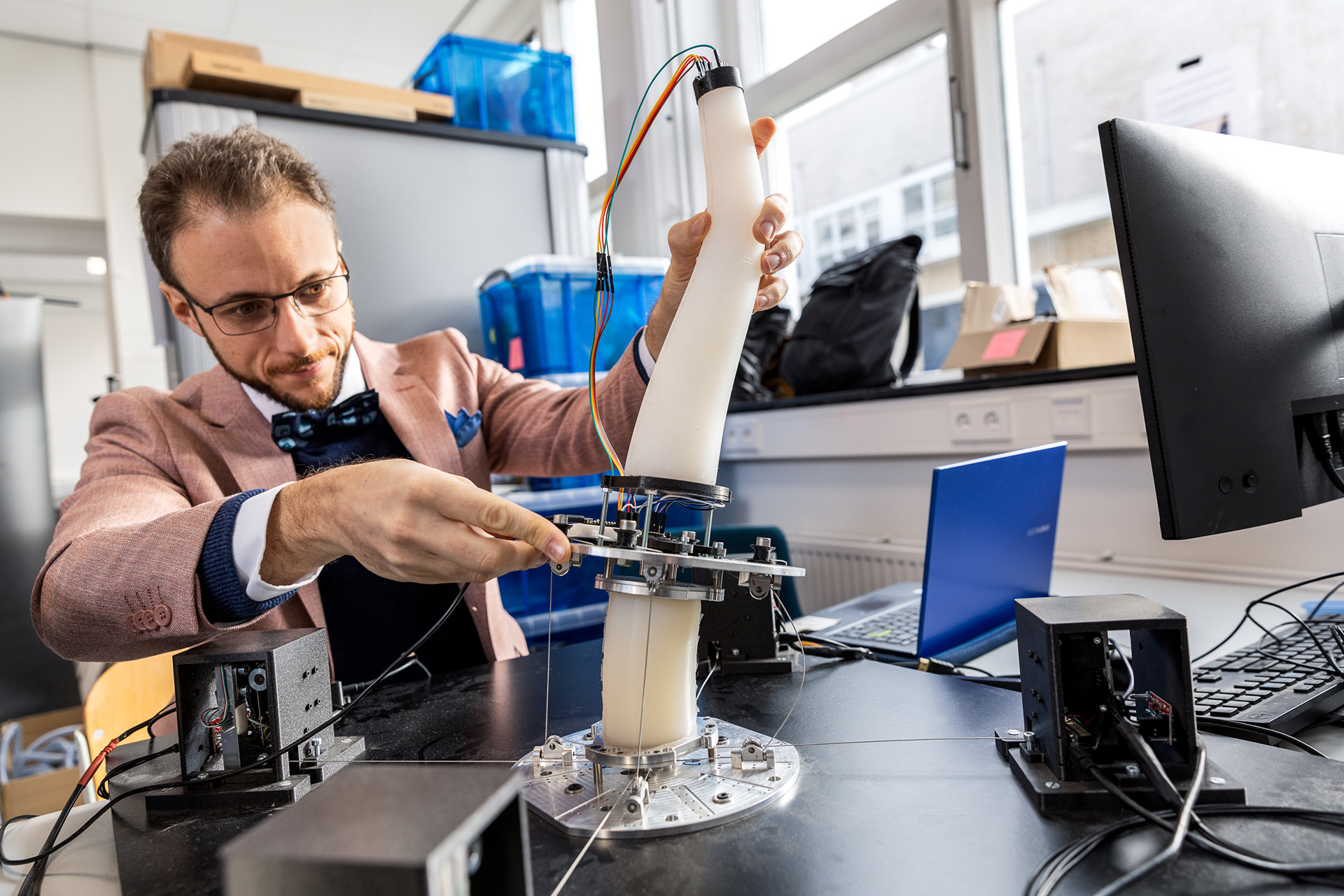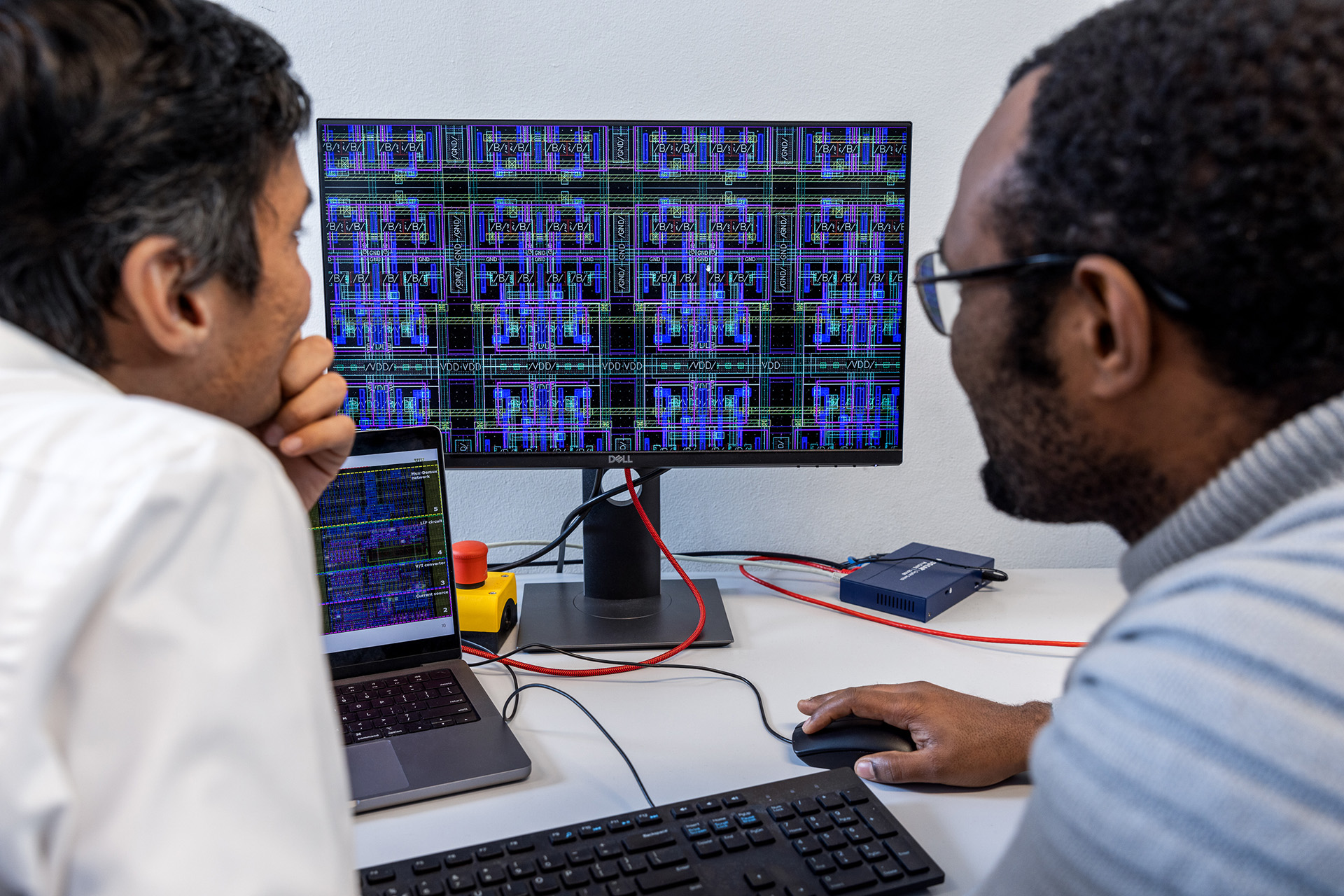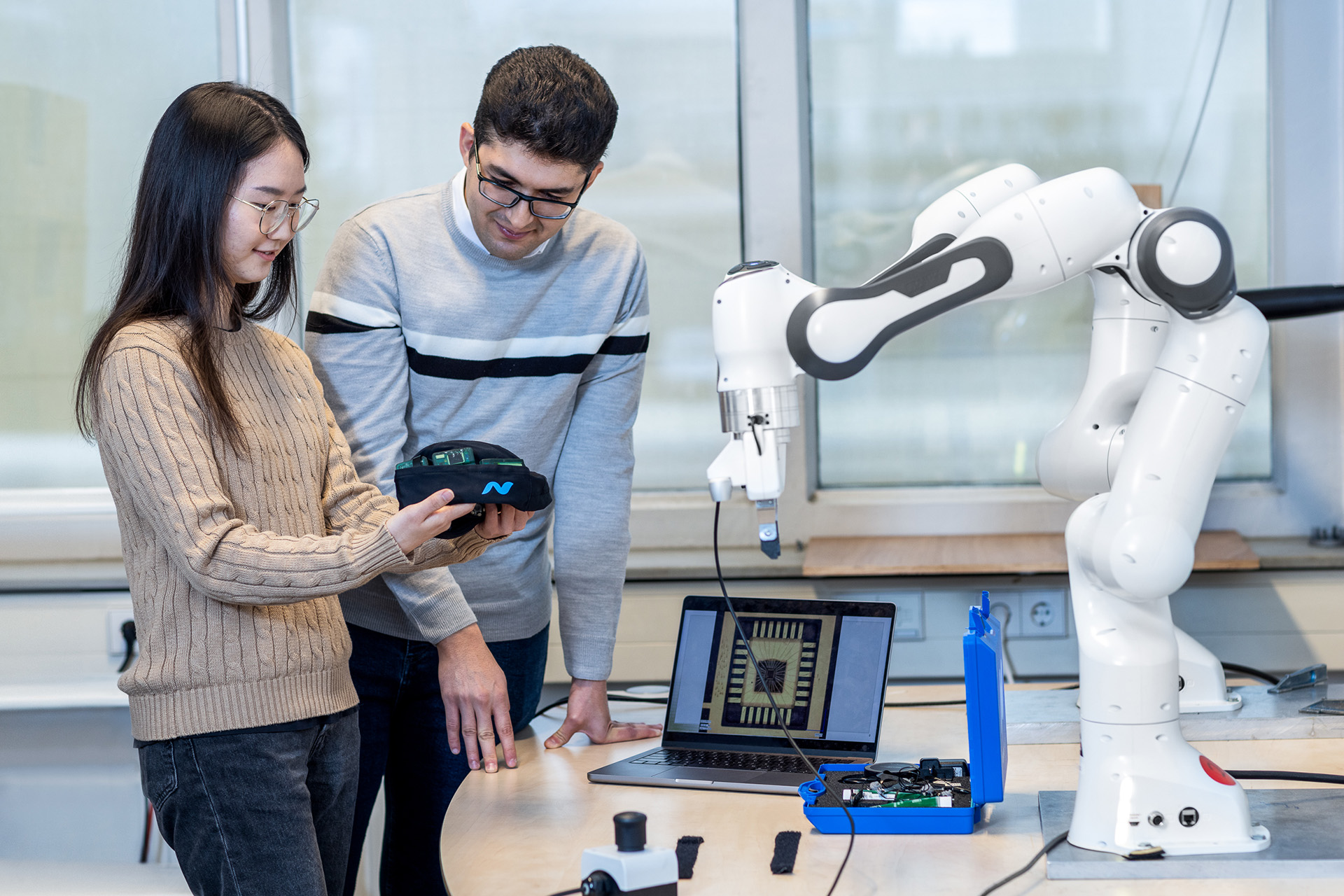SELF Lab
Smart Edge Lab for Healthcare
AI acts as a driving force for economic and social development. It sits at the forefront of the technological revolution and industrial transformation.
The rise of connected Internet-of-Things (IoT) devices has led to increasing data collection, which requires greater storage, computational power, and intelligence at the edge. This partnership between IoT and edge computing has the potential to transform data computing and yield significant benefits for industry verticals. Among the crucial edge applications, biomedical devices such as medical implants (e.g., for epilepsy early detection) have enormous potential societal impact. Another exciting application of edge computing is the neuromorphic control of soft robots, which can benefit from advanced computational capabilities at the edge to achieve highly adaptable and responsive behavior, making them suitable for medical, industrial, and environmental applications.
Today’s AI solutions are extremely power-hungry and are unsuitable for energy-constrained IoT-edge devices. Deploying AI at the edge requires new computing engines with energy efficiencies 100-1,000x better than current state-of-the-art technologies.
The SELF Lab targets the design and development of smart edge computing engines. We demonstrate their superiority for personalized healthcare, such as early epilepsy detection (a neurological disease that manifests as a brain-wide phenomenon). The computing engine will be based on computation-in-memory architecture, beyond traditional Von-Neumann. It will use memristor devices well suited to brain-inspired computing, combined with new biologically inspired learning algorithms and power-aware efficient mapping methods.
The Team
Directors
PhD's
Associated postdocs
Associated faculty
Education
Courses
Resources
Bachelor Projects
Ongoing
- Collecting a dataset of event-based cameras images for a quadruped robot (ME)
Master projects
Ongoing
- Learning to swim using spiking neural networks (ME)
Partners














